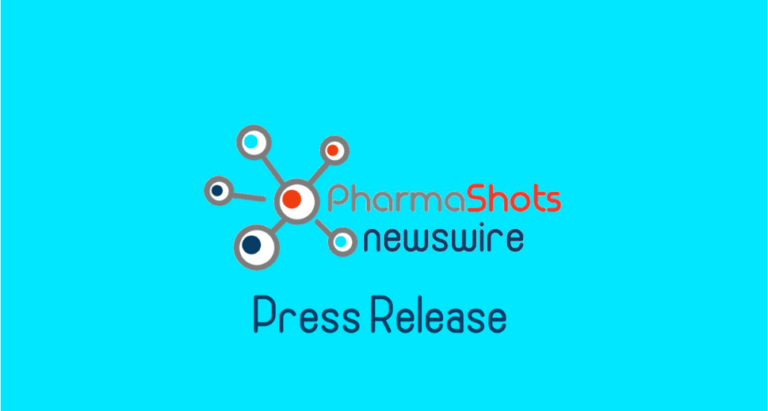New Drug Application initiated with U.S. FDA for TAR-200, the first and only intravesical drug releasing system for patients with BCG-unresponsive high-risk non-muscle-invasive bladder cancer
January 15, 2025
Application accepted for U.S. FDA Real-Time Oncology Review (RTOR) based on Phase 2b SunRISe-1 study showing highest single-agent complete response rate of 83.5 percent1
RARITAN, N.J., January 15, 2025 /PR Newswire/ – Johnson & Johnson (NYSE: JNJ) announced it has initiated the submission of an original New Drug Application with the U.S. Food and Drug Administration (FDA) for TAR-200 for the treatment of patients with Bacillus Calmette-Guérin (BCG)-unresponsive high-risk non-muscle-invasive bladder cancer (HR-NMIBC) with carcinoma in situ (CIS), with or without papillary tumors. This submission is being reviewed by the FDA through the Real-Time Oncology Review (RTOR) program, which allows the FDA to review data before the complete application is formally submitted and helps ensure treatments are available for patients as soon as possible.
“Upon approval, TAR-200 promises to be a meaningful additional treatment option for certain patients with NMIBC, addressing a critical need for people who have had relatively limited therapeutic alternatives. Many patients face life-altering surgical options such as radical cystectomy, which is complete bladder removal,” said Yusri Elsayed, M.D., M.H.Sc., Ph.D., Global Therapeutic Head, Oncology, Johnson & Johnson Innovative Medicine. “By combining our expertise in innovative medicine and medical devices, Johnson & Johnson is uniquely positioned to transform how we treat certain types of bladder cancer through the first and only intravesical drug releasing system for this disease. We look forward to working with the FDA in review of this application.”
The submission of this innovative intravesical drug releasing system is supported by data from the Phase 2b SunRISe-1 registration study. Data collected through the second quarter of 2024 and presented at the European Society for Medical Oncology (ESMO) 2024 Congress as a late-breaking oral presentation showed an 83.5 percent complete response (CR) rate and highly durable CRs without the need for reinduction – at a median follow-up of nine months, 82 percent of responders maintained response. At data cutoff in May 2024, safety and tolerability data presented at ESMO demonstrated a low occurrence of Grade 3 or higher treatment-related adverse events (TRAEs) (9 percent); five patients had TRAEs leading to discontinuation (6 percent) and no treatment-related deaths were reported.1
TAR-200 is an investigational intravesical drug releasing system designed to provide sustained local delivery of gemcitabine into the bladder. It is placed into the bladder by a healthcare professional using a co-packaged urinary placement catheter in an outpatient setting in under five minutes and without the need for anesthesia.
In December 2023, the FDA granted Breakthrough Therapy Designation (BTD) to TAR-200 for the treatment of adult patients with BCG-unresponsive HR-NMIBC with CIS who are ineligible for or have elected not to undergo radical cystectomy.
About SunRISe-1, Cohort 2
SunRISe-1 (NCT04640623), Cohort 2, is a randomized, parallel-assignment, open-label Phase 2b clinical study evaluating the safety and efficacy of TAR-200 monotherapy alone for BCG-unresponsive HR-NMIBC carcinoma in situ (CIS) patients who are ineligible for, or elected not to undergo, radical cystectomy. The primary endpoint for Cohort 2 is CR rate at any time point. Secondary endpoints include duration of response (DOR), overall survival (OS), pharmacokinetics, quality of life, safety and tolerability.
About High-Risk Non-Muscle-Invasive Bladder Cancer
High-risk non-muscle-invasive bladder cancer (HR-NMIBC) is a type of non-invasive bladder cancer that is more likely to recur or spread beyond the lining of the bladder, called the urothelium, and progress to invasive bladder cancer compared to low-risk NMIBC.2,3 HR-NMIBC makes up 15-44 percent of patients with NMIBC and is characterized by a high-grade, large tumor size, presence of multiple tumors, and CIS. Radical cystectomy is currently recommended for NMIBC patients who fail BCG therapy, with over 90 percent cancer-specific survival if performed before muscle-invasive progression.4,5 Given that NMIBC typically affects older patients, many may be unwilling or unfit to undergo radical cystectomy.6 The high rates of recurrence and progression can pose significant morbidity and distress for these patients.2,5
About Johnson & Johnson
At Johnson & Johnson, we believe health is everything. Our strength in healthcare innovation empowers us to build a world where complex diseases are prevented, treated, and cured, where treatments are smarter and less invasive, and solutions are personal. Through our expertise in Innovative Medicine and MedTech, we are uniquely positioned to innovate across the full spectrum of healthcare solutions today to deliver the breakthroughs of tomorrow and profoundly impact health for humanity. Learn more at https://www.jnj.com or at www.innovativemedicine.jnj.com. Follow us at @JNJInnovMed. Janssen Research & Development, LLC, and Janssen Biotech, Inc., are Johnson & Johnson companies.
Cautions Concerning Forward-Looking Statements
This press release contains “forward-looking statements” as defined in the Private Securities Litigation Reform Act of 1995 regarding product development and the potential benefits and treatment impact of TAR-200. The reader is cautioned not to rely on these forward-looking statements. These statements are based on current expectations of future events. If underlying assumptions prove inaccurate or known or unknown risks or uncertainties materialize, actual results could vary materially from the expectations and projections of Janssen Research & Development, LLC, Janssen Biotech, Inc., Janssen Global Services, LLC and/or Johnson & Johnson. Risks and uncertainties include, but are not limited to: challenges and uncertainties inherent in product research and development, including the uncertainty of clinical success and of obtaining regulatory approvals; uncertainty of commercial success; manufacturing difficulties and delays; competition, including technological advances, new products and patents attained by competitors; challenges to patents; product efficacy or safety concerns resulting in product recalls or regulatory action; changes in behavior and spending patterns of purchasers of healthcare products and services; changes to applicable laws and regulations, including global healthcare reforms; and trends toward healthcare cost containment. A further list and descriptions of these risks, uncertainties and other factors can be found in Johnson & Johnson’s Annual Report on Form 10-K for the fiscal year ended December 31, 2023, including in the sections captioned “Cautionary Note Regarding Forward-Looking Statements” and “Item 1A. Risk Factors,” and in Johnson & Johnson’s subsequent Quarterly Reports on Form 10-Q and other filings with the Securities and Exchange Commission. Copies of these filings are available online at www.sec.gov, www.jnj.com or on request from Johnson & Johnson. None of Janssen Research & Development, LLC, Janssen Biotech, Inc., Janssen Global Services, LLC nor Johnson & Johnson undertakes to update any forward-looking statement as a result of new information or future events or developments.
Footnotes
1 Van der Heijden M, et al. TAR-200 +/- Cetrelimab and Cetrelimab Alone in Patients With Bacillus Calmette-Guérin–Unresponsive High-Risk Non–Muscle-Invasive Bladder Cancer: Updated Results From SunRISe-1. ESMO 2024. September 15, 2024.
2 Grab-Heyne K, Henne C, Mariappan P, et al. Intermediate and high-risk non–muscle-invasive bladder cancer: an overview of epidemiology, burden, and unmet needs. Front Oncol. 2023;13:1170124.
2 Lieblich A, Henne C, Mariappan P, Geiges G, Pöhlmann J, Pollock RF. The management of non–muscle-invasive bladder cancer: a comparison of European and UK guidelines. J Clin Urol. 2018;11(2):144-148.
4 Brooks NA, O’Donnell MA. Treatment options in non–muscle-invasive bladder cancer after BCG failure. Indian J Urol. 2015;31(4):312-319. doi:10.4103/0970-1591.166475
5 Guancial EA, Roussel B, Bergsma DP, et al. Bladder cancer in the elderly patient: challenges and solutions. Clin Interv Aging. 2015;10:939-949.
6 Chamie K, Litwin MS, Bassett JC, et al. Recurrence of high-risk bladder cancer: A population-based analysis. Cancer. 2013;119(17):3219-3227.





